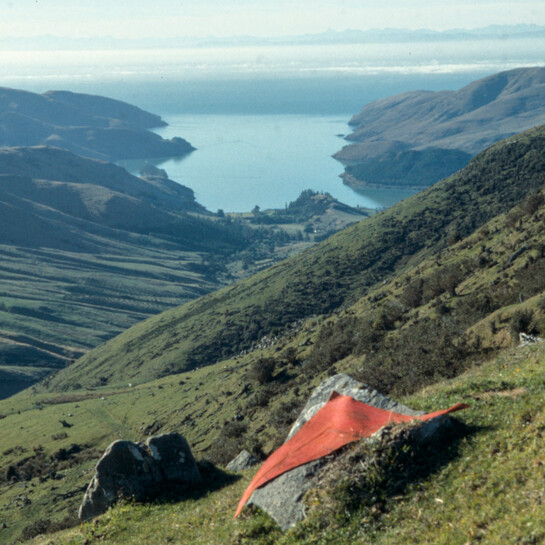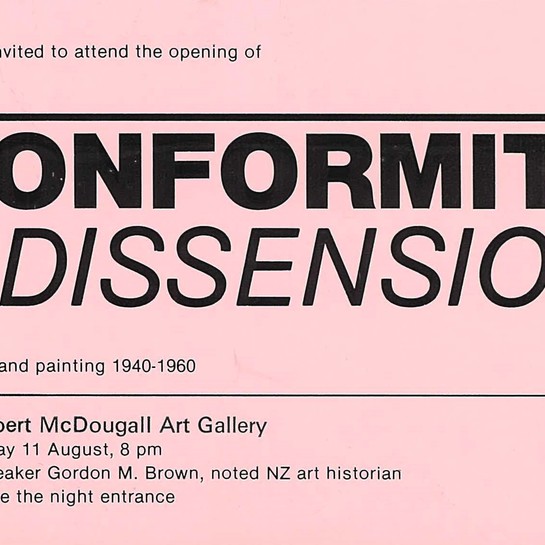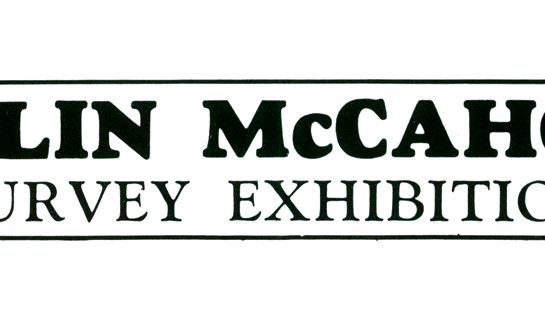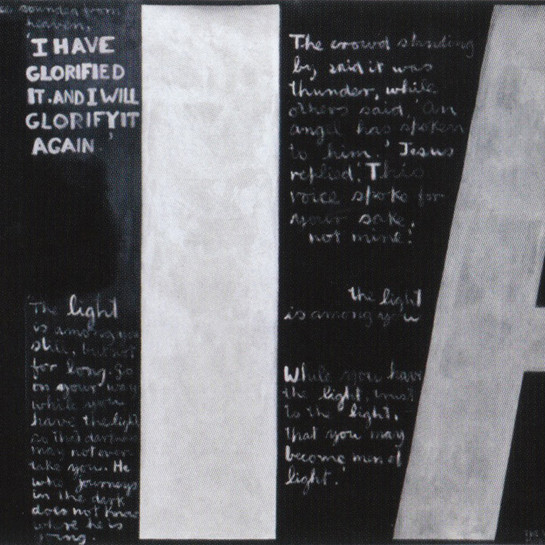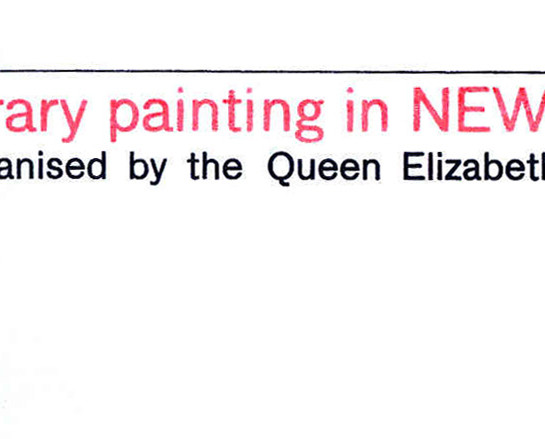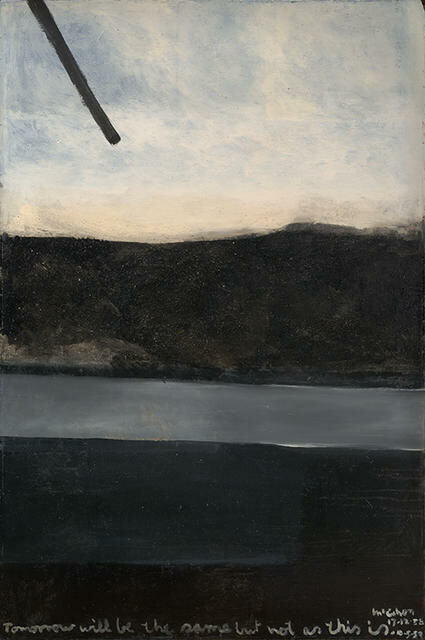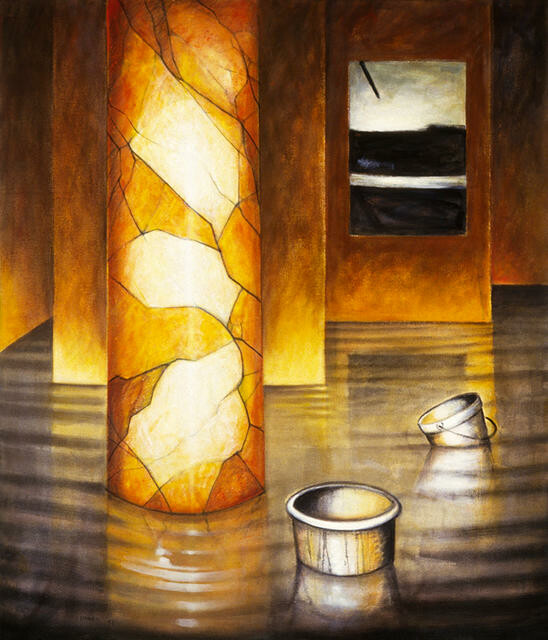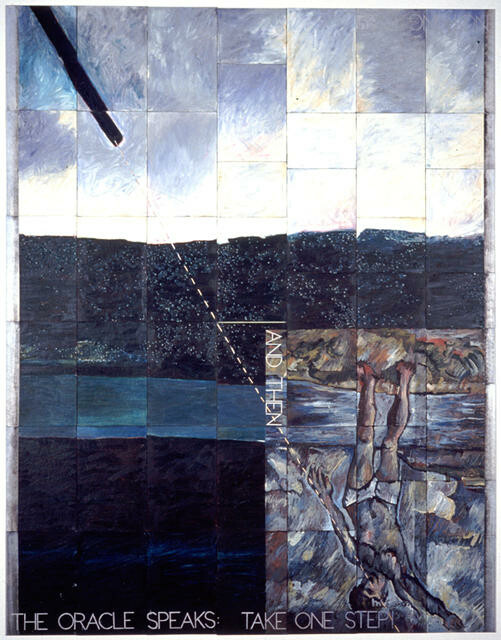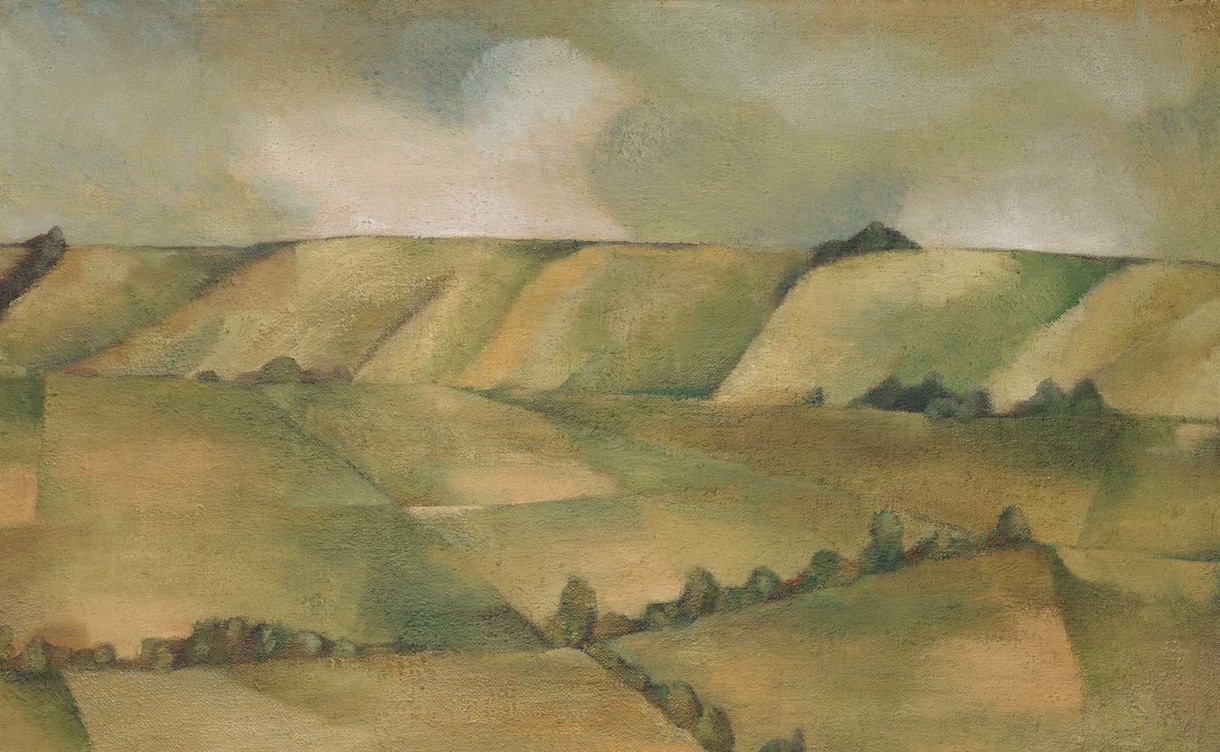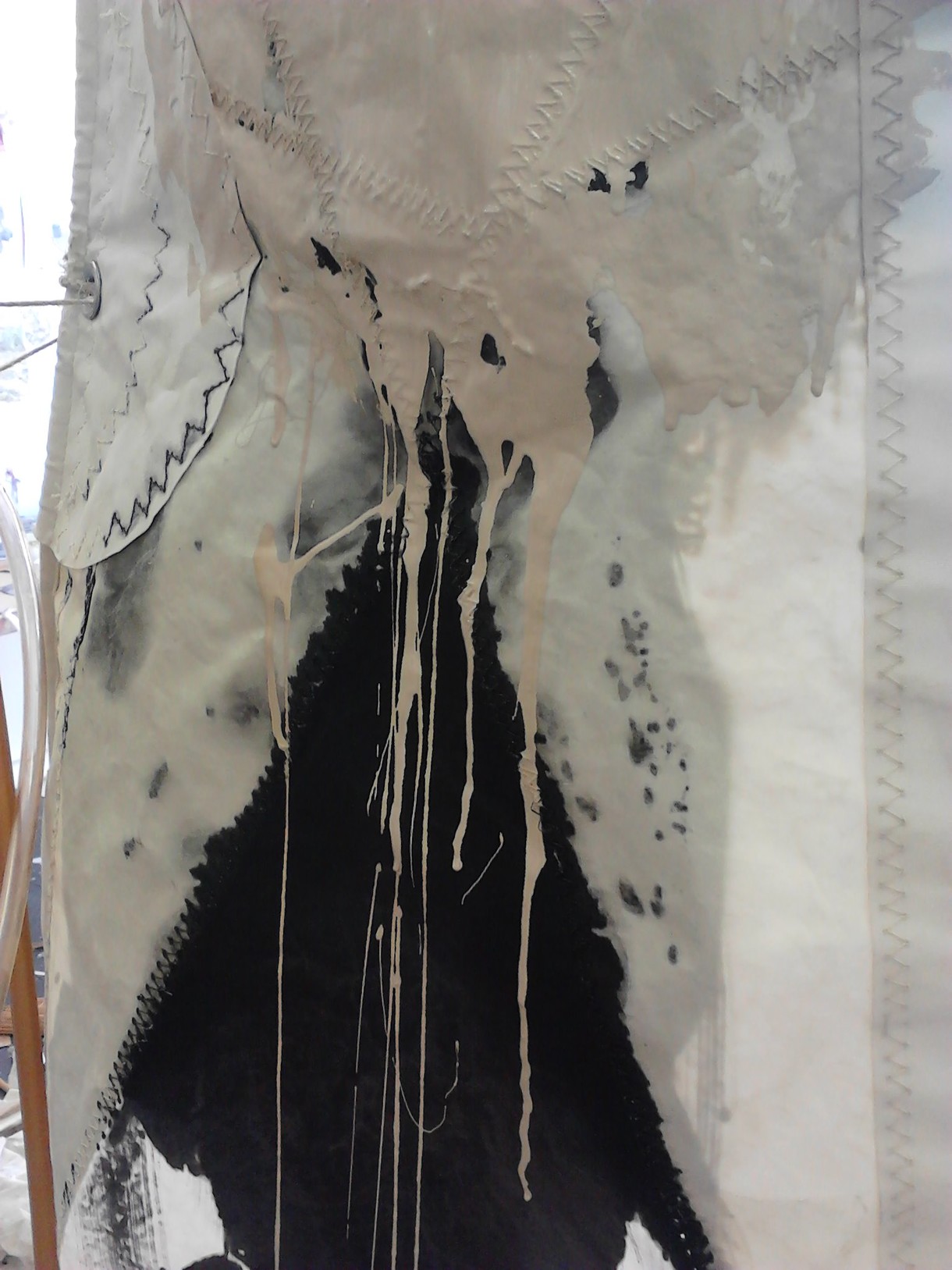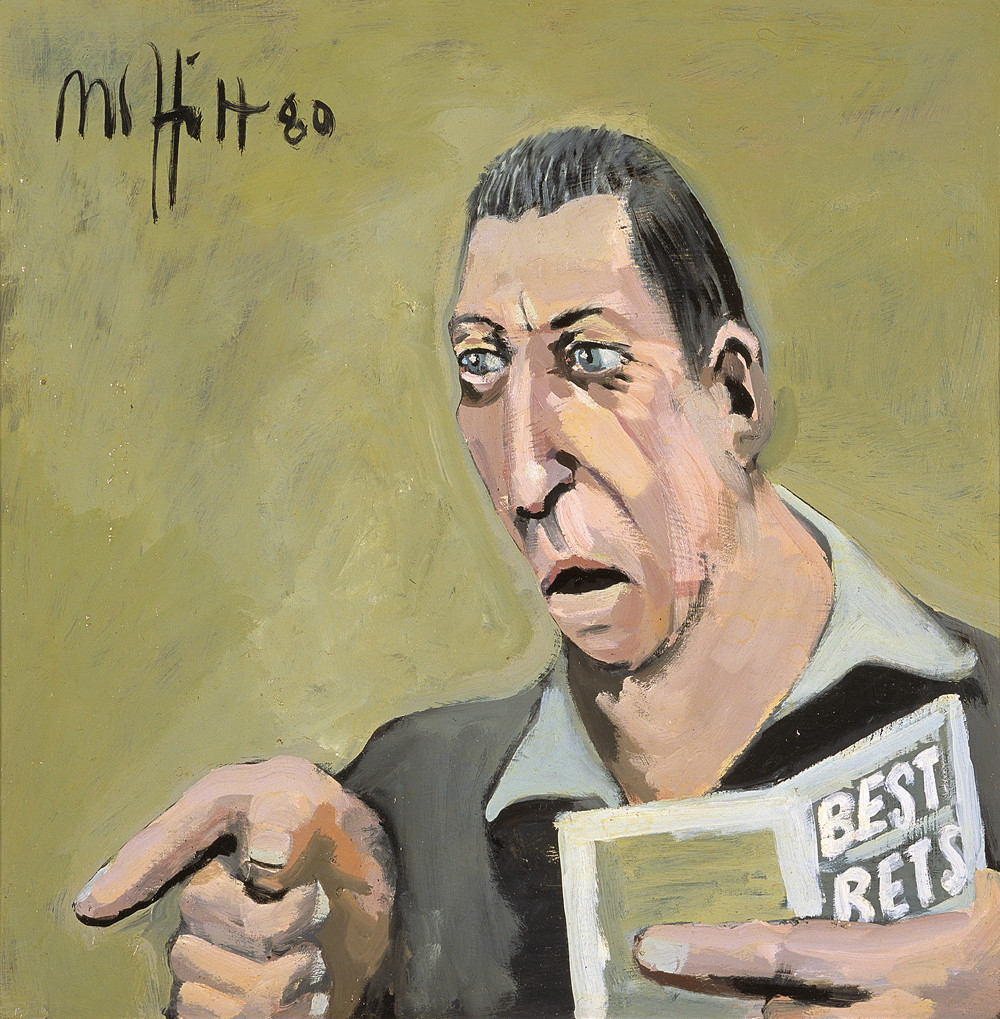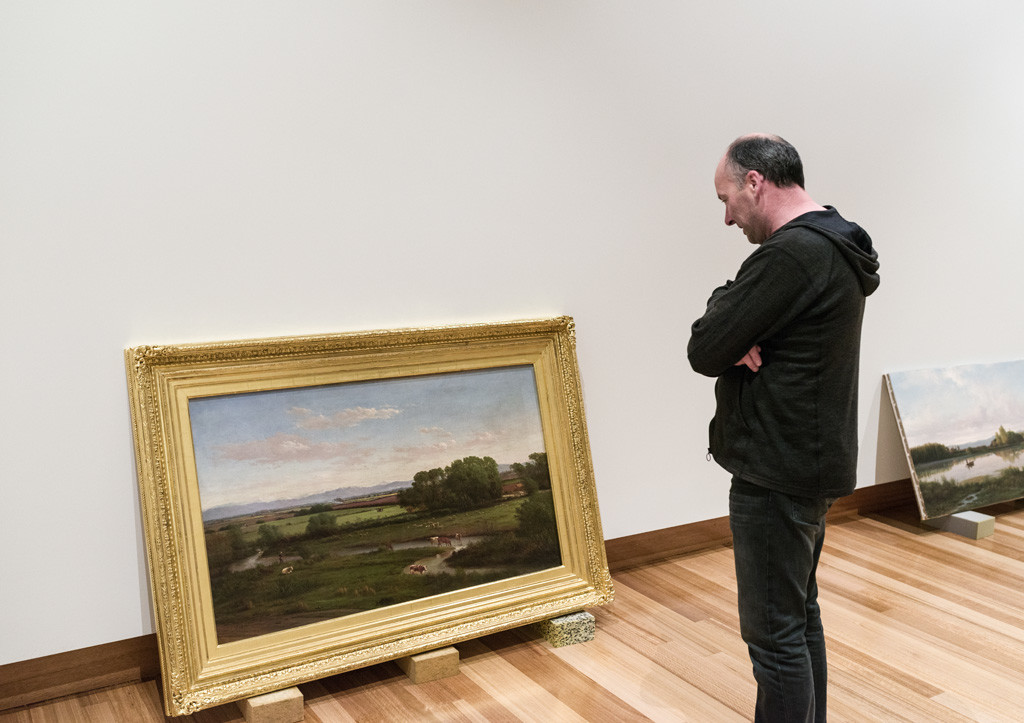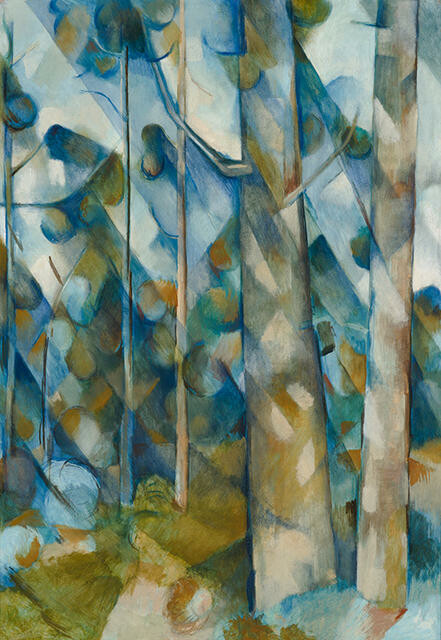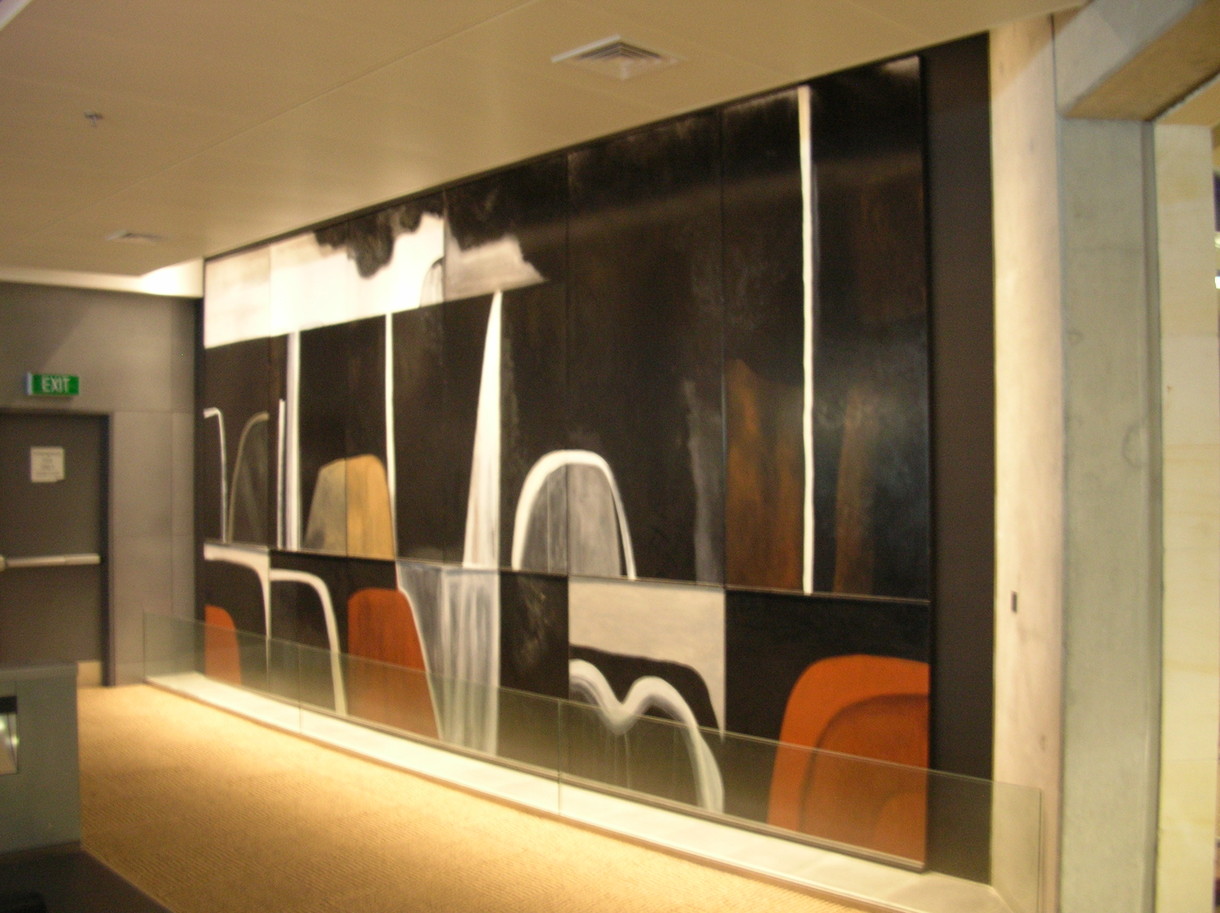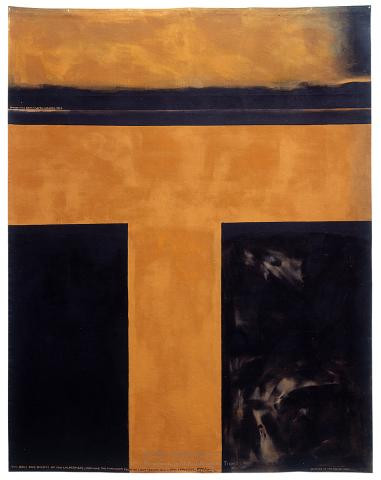Colin McCahon
Aotearoa New Zealand, b.1919, d.1987
Tomorrow will be the same but not as this is
- 1958-1959
- Solpah and sand on board
- Presented by a group of subscribers, December 1962
- Reproduced courtesy of Colin McCahon Research and Publication Trust
- 1886 x 1278mm
- 69/142
Location: Monica Richards Gallery
Tags: abstraction, black (color), diagonal, horizon line, landscapes (representations), rivers, roads, sky, white (color), words
Colin McCahon was an important figure in Jonathan Mane-Wheoki’s (Ngāpuhi, Te Aupōuri, Ngāti Kuri) life – first a family friend when Mane-Wheoki’s family moved to Titirangi in the 1950s, and then a teacher when he attended the night classes McCahon taught in the attic of the Auckland Art Gallery Toi o Tāmaki. While he was a student at the University of Canterbury, Mane-Wheoki frequently visited the Robert McDougall Art Gallery to view McCahon’s Tomorrow will be the same but not as this is, and the work held a special place in his heart. The other two works shown here were purchased when Mane-Wheoki was in London studying at the Courtauld Institute of Art. While there, he was commissioned by the McDougall Gallery to purchase works for the collection. In 1974, Mane-Wheoki recommended the entire budget he had available be allocated for the purchase of this Degas etching, and the following year he secured this Andy Warhol print, both small yet exemplary international works.
(Living Archives, 25 October 2025 – 8 March 2026, exhibited alongside 'Manet assis, tourné à droite' by Edgar Degas and 'Mao tse-Tung' by Andy Warhol)
Read an essay by Dr Peter Simpson about how this work came into our collection.
Exhibition History
McCahon / Van der Velden, 18 December 2015 – 7 August 2016
“Driving one day with the family over hills from Brighton or Taieri Mouth to the Taieri Plain, I first became aware of my own particular God, perhaps an Egyptian God, but standing far from the sun of Egypt in the Otago cold. Big hills stood up in front of little hills, which rose up distantly across the plains from the flat land: there was a landscape of splendour, and order and peace. (The Crucifixion hadn't yet come: perhaps this landscape was of the time before Jesus. I saw an angel in this land. Angels can herald beginnings.) I saw something logical, orderly and beautiful belonging to the land and not yet to its people. Not yet understood or communicated, not even really yet invented. My work has largely been to communicate this vision and to invent the way to see it.” —Colin McCahon
Christchurch people have always enjoyed vigorous debate about the merits or otherwise of contemporary art and architecture. One such debate centred on this painting by Colin McCahon, which was called a ‘monstrosity’ by one city councillor on the same evening in 1962 that it was accepted into the Robert McDougall Art Gallery’s collection. Fifty years on, ‘Tomorrow’ is regarded by many as one of Christchurch Art Gallery’s most important modern paintings. With its stark and mysterious landscape – is this a simple road trip, or a spiritual journey? – the painting also makes a fitting centrepiece for a room containing art from the twentieth century. (Brought to Light, November 2009)
The depiction of light and dark was a constant feature in Colin McCahon's art. He used it to symbolise the fundamental oppositions of life and death, good and evil and ignorance and revelation. Now regarded as New Zealand's leading 20th century artist, McCahon's unconventional abstract style was received with hostility when it was first exhibited. In fact, this painting was initially rejected as being unsuitable for the Robert McDougall Art Gallery's Collection. In protest a number of Christchurch residents, over the period of 1959 to 1962, set up a subscription to buy the work for the city.
McCahon was born in Timaru and studied art in Dunedin, first exhibiting his work in 1949. He spent time in Christchurch and Nelson but moved to Auckland in 1953, working first at the City Art Gallery, then teaching at the University of Auckland School of Fine Arts. McCahon established a studio at Muriwai in 1968 and in 1970 resigned from teaching to paint full-time. (Opening hang, 2003)
Light and dark, symbolising the great oppositions of life and death, good and evil, ignorance and revelation, are fundamental to McCahon's art. Within the abstract colour fields of this painting is the suggestion of a New Zealand scene with a river or inlet, between dark scrub covered banks. The handwritten comment contrasts the fleeting passage of time with the permanence of the land while the angled bar at top left introduces its own mystery. This device has many possible interpretations, such as divine intervention or fate, and it also acts as an important aesthetic element contributing to the unity the composition. (Label from before 2003)
